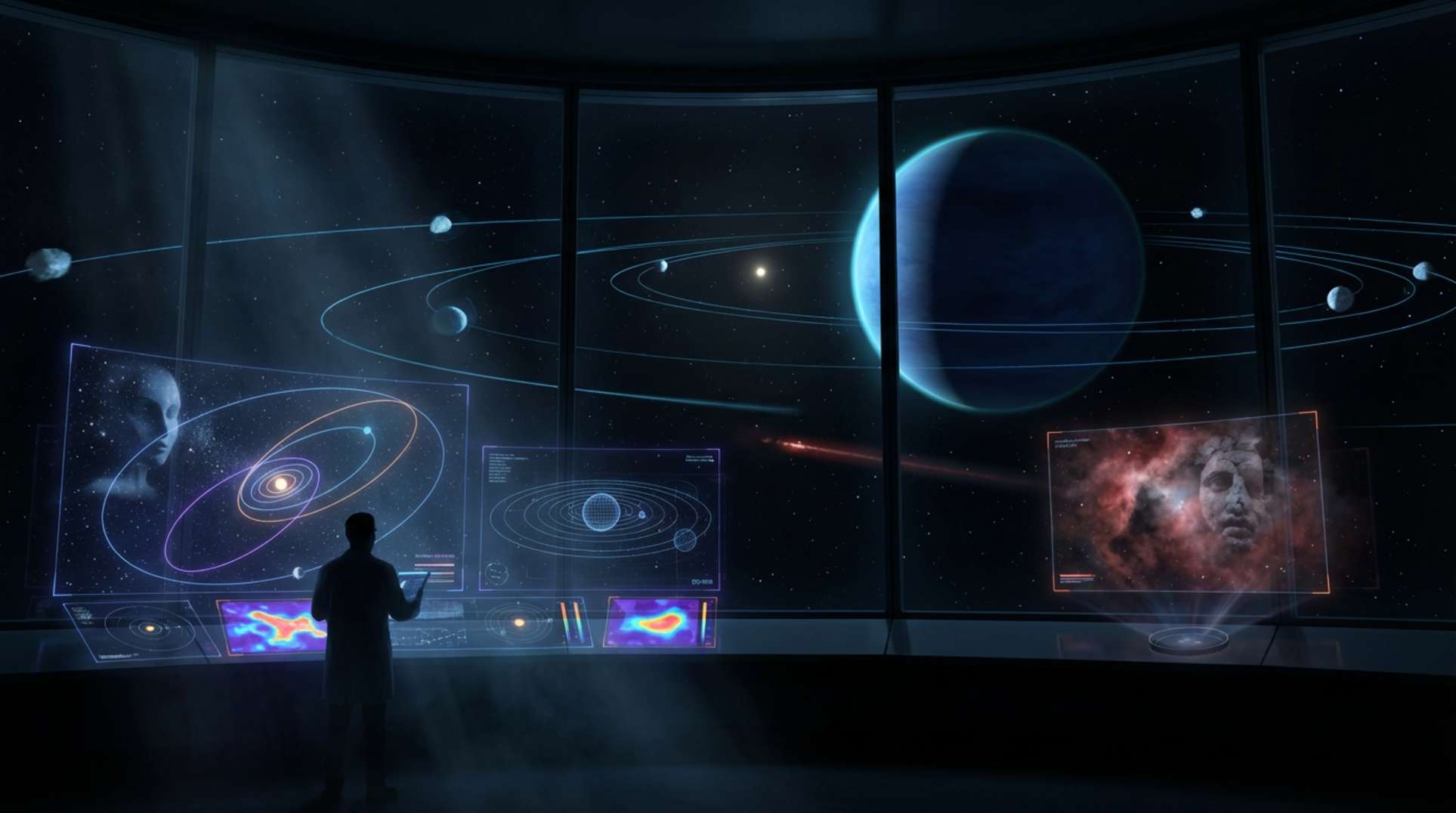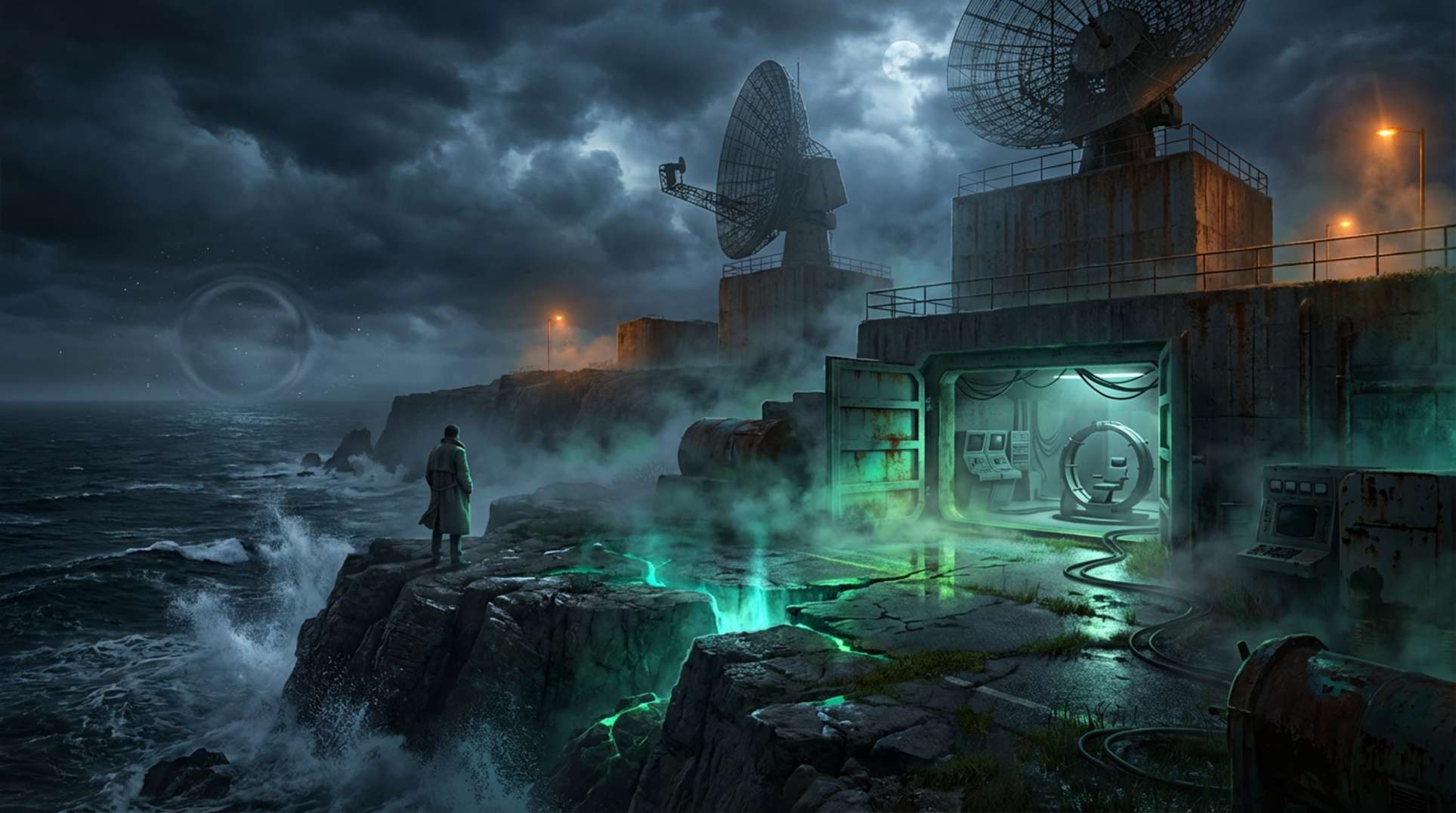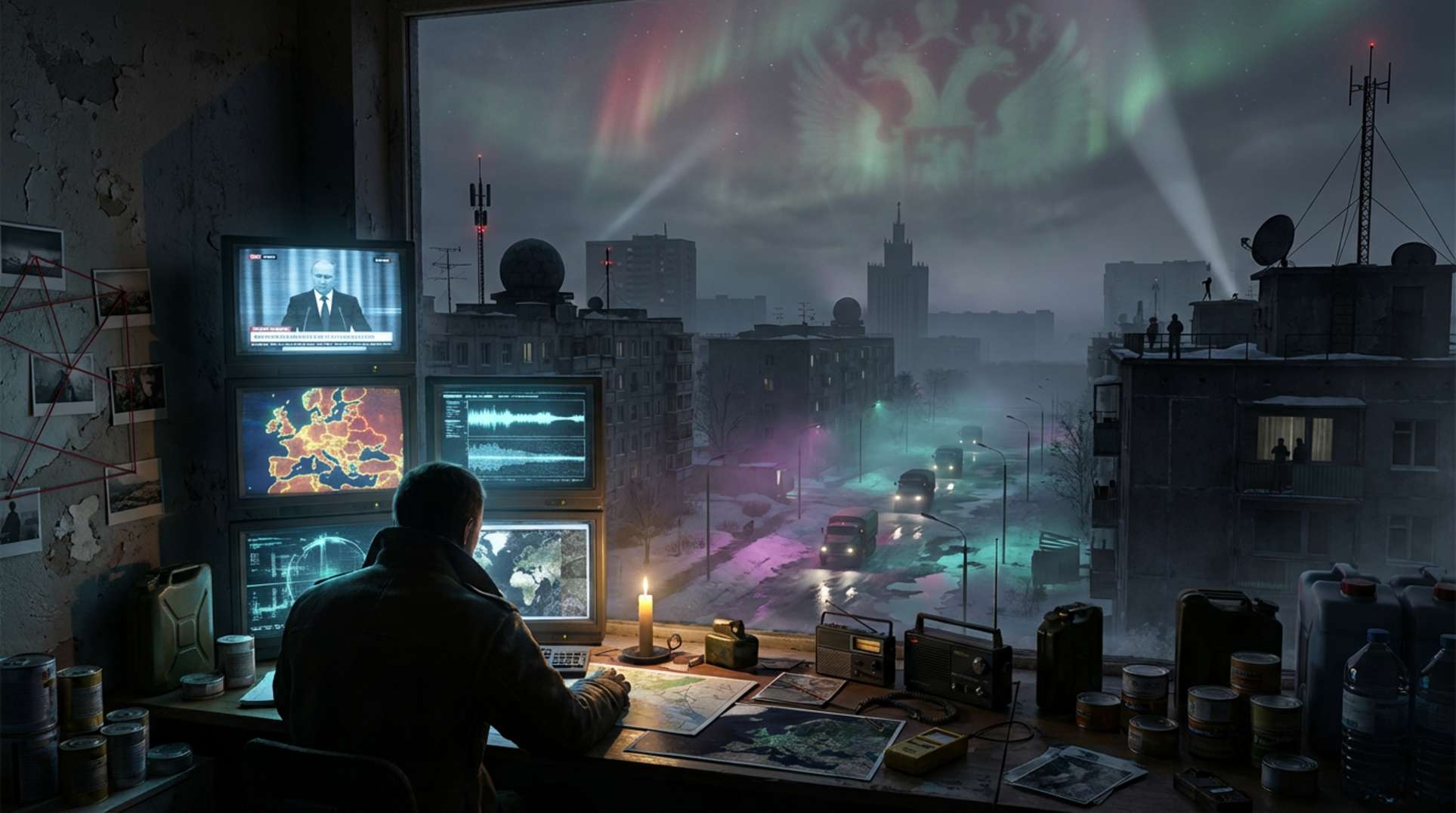Key Takeaways
- The core scientific claim: Planet Nine is a proposed 5–10 Earth-mass ice giant, suggested in 2016 by Caltech astronomers Konstantin Batygin and Mike Brown, based on unusual clustering in the orbits of distant Kuiper Belt objects known as extreme trans-Neptunian objects (ETNOs).
- Newest evidence: Recent cross-matching of infrared sky surveys from the IRAS and AKARI satellites, taken 23 years apart, has identified candidate signatures of a slow-moving, cold giant, alongside ongoing analysis of ETNO orbital clustering.
- Unresolved mysteries: While the data points to something massive influencing orbits, alternatives like Modified Newtonian Dynamics (MOND), primordial black holes, or no planet at all remain in play—echoing community discussions of Nibiru or Planet X as a hidden world with potential ties to ancient anomalies.
A Slow-Moving Shadow in the Outer Dark
Beyond Neptune lies the Kuiper Belt, a frozen ring of icy remnants, and farther still, the realm of extreme trans-Neptunian objects—scattered in a vast, dark halo where the Sun’s light fades to a weak glimmer and orbits can span tens of thousands of years. For decades, searches for a ‘Planet X’ have turned up empty, leaving astronomers and skywatchers alike scanning the void for signs of something massive, subtly reshaping the solar system’s distant architecture. Now, researchers dig through infrared data from the 1980s IRAS mission and the 2000s AKARI survey, while supercomputers model faint gravitational pulls—building a case that feels like it might finally cross into the territory of long-whispered stories about Nibiru or a hidden giant, stirring questions for those who’ve tracked these tales for years.
Imagine a world on an orbit so vast it completes one loop around the Sun in 10,000 to 20,000 years—barely shifting position since humans first gazed at the stars. This proposed Planet Nine could be out there, a cold sentinel in the far reaches, its presence inferred from the way smaller bodies align like clues in a cosmic puzzle. As new observatories like the Vera C. Rubin prepare to hunt for that faint, almost motionless glow, the air thickens with anticipation: is this the breakthrough, or another layer in the mystery?
What Researchers, Skywatchers, and Storytellers Are Claiming
Mainstream astronomers, led by Batygin and Brown in their 2016 proposal, point to at least six—and later up to 13—extreme trans-Neptunian objects with orbits that cluster in unexpected ways, far from random chance. This suggests a gravitational shepherd, an unseen planet pulling strings from afar. They describe it as an ice giant, 5–10 times Earth’s mass, on an elongated orbit tilted about 20 degrees, roughly 400–630 AU from the Sun.
Alternative researchers often link this to the Nibiru or Planet X concept, drawing from interpretations of Mesopotamian texts popularized by Zecharia Sitchin—a world on a highly eccentric path, tied to catastrophic Earth events and ancient visitors called the Anunnaki. Community voices, including online analysts and figures like Paul Begley, frame it through biblical lenses, seeing prophetic signs in the heavens that could signal disasters or concealed truths.
Hybrid views blend the two: some argue that every new orbital oddity, strange meteor, or infrared blip builds evidence for a tracked but unrevealed Planet Nine, possibly matching Nibiru more closely than officials admit. These perspectives treat the hypothesis as a bridge between data and deeper narratives, without forcing a divide.
Orbits, Infrared Footprints, and the Clues We Can Actually Measure
The evidence starts with statistics: ETNOs with paths beyond Neptune show clustering in their orbital elements, like similar directions of closest approach and tilts around 20 degrees from the solar plane—patterns tough to chalk up to luck. Arguments of perihelion for these objects bunch near 0° or 180°, hinting at mechanisms like the Kozai effect, potentially driven by a distant massive body.
Simulations from NASA, Caltech, and others demonstrate that a 5–10 Earth-mass planet on an inclined, elongated orbit can recreate this clustering and the outer solar system’s overall tilt. No direct image exists yet, but the case builds on these models.
| Parameter | Details |
|---|---|
| Proposed Year | 2016 |
| Estimated Mass | 5–10 Earth masses |
| Semi-Major Axis | ~400–630 AU |
| Orbital Period | 10,000–20,000 years |
| True Anomaly Estimate | Not precisely known; varies by model |
| Number of Clustered ETNOs | At least 13 |
| Orbital Tilt | ~20 degrees |
Recent 2025 analyses compared IRAS and AKARI infrared data, 23 years apart, spotting potential slow-moving cold objects that fit a Planet Nine profile—though unconfirmed. A 2022 study tied the unusual meteor CNEOS 2014-01-08 to a possible Planet Nine location in Aries (around RA 53±4.3°, Dec 9.2±1.3°), but this remains speculative.
Gatekeepers, Hidden Worlds, and the Official Line
NASA and Caltech describe Planet Nine as a hypothetical ice giant, deduced from ETNO gravitational anomalies, with active searches underway but no confirmation. They stress it’s not a rogue world charging inward, not on a collision path, and unrelated to Nibiru doomsday tales.
Institutions like Michigan and Princeton back simulations favoring a distant massive planet for the clustering and tilts, while also considering MOND or even a primordial black hole as alternatives. Official statements draw firm lines against mythic interpretations, calling them hoaxes or unrelated.
In alternative and UFO circles, this caution often reads as controlled disclosure—suggesting stronger evidence exists, or ties to past cataclysms and visitors that agencies avoid. History, like Neptune’s prediction from anomalies, fuels this skepticism, especially amid known entanglements in space programs. The friction highlights shared data points, but differing reads on what’s omitted.
When Ancient Stories Meet New Data
The Nibiru narrative, drawn from Sumerian texts as interpreted by Sitchin, posits a planet on an eccentric orbit every 3,600 years, crossing near Earth and linked to Anunnaki beings and cyclical upheavals. Planet Nine’s profile contrasts: a 10,000–20,000-year cycle at 400–630 AU, staying mostly remote without routine close passes.
Overlaps exist in the idea of a hidden, elongated-orbit giant, but parameters clash on behavior and impact. Some community members see infrared candidates and the CNEOS meteor as signs that models might adjust, perhaps revealing a more intrusive path.
Speculative additions, like theoretical distant bodies nicknamed ‘Ammonite,’ address lingering anomalies, layering mystery. Both traditions—myths encoding cosmic cycles, equations mapping gravitational pulls—grapple with unseen influences on Earth’s story, inviting us to weigh their intersections.
How Close Are We Really—and What Happens If We Find It?
The gravitational case holds firm: clustering of at least 13 ETNOs, their 20-degree tilts, and simulations pinning it on a 5–10 Earth-mass body. Infrared cross-matches from IRAS and AKARI, plus CNEOS-derived position estimates, shrink the search area, with the Vera C. Rubin Observatory poised for clarity.
Alternatives persist: MOND gravity tweaks, random alignments, or a black hole relic—each a potential shake-up. Discovery would probe solar system origins: captured rogue, scattered giant, or formation leftover?
For those tracking Nibiru and ancient-contact ideas, confirmation could validate hidden worlds, sparking fresh debates on overlooked history. Ultimately, this pursuit unites astronomy and edge curiosity, staring at the same sky for what might emerge—be it ice giant, anomaly, or rewrite of the rules.
Frequently Asked Questions
The primary evidence is the unusual clustering of orbits in at least 13 extreme trans-Neptunian objects (ETNOs), including similar directions of closest approach and tilts of about 20 degrees, which simulations suggest could be caused by a massive unseen planet.
While both involve a hidden outer planet on an elongated orbit, Planet Nine’s proposed 10,000–20,000-year period keeps it distant, unlike Nibiru’s 3,600-year cycle with inner-system passes tied to catastrophes and ancient visitors in some narratives. Community views often see echoes, but parameters don’t fully align.
No telescope has imaged an object confirmed as Planet Nine yet. Recent infrared analyses from IRAS and AKARI show candidate signals, and position estimates from events like the CNEOS meteor narrow the search, but direct detection remains elusive.
NASA and Caltech view it as a hypothetical ice giant based on gravitational anomalies, actively searched for but unconfirmed. They distance it from doomsday or Nibiru claims, emphasizing it’s not on a collision course.
It would reshape solar system formation models, possibly as a captured world or scattered giant. For alternative communities, it might vindicate hidden-planet ideas, fueling discussions on ancient narratives or unseen influences.




